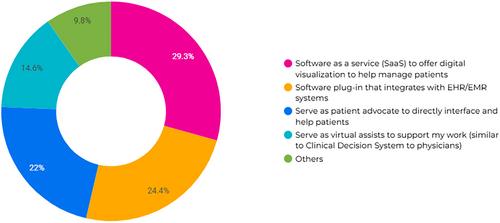Toward bridging gaps in patient navigation: A study on the adoption of artificial intelligence technologies
Abstract
Background
Patient navigators, whose value has become increasingly apparent, still face significant challenges, including a lack of support, funding, and recognition. These challenges have been exacerbated in the wake of COVID-19 pandemic.
Methods
This study explored the potential use of artificial intelligence (AI) in patient navigation. Data were collected through structured surveys and individual interviews with patient navigators from a variety of institutions and professional backgrounds. The data were analyzed to understand the current state of patient navigation, identify existing gaps, and suggest best practices for the future.
Results
The findings showed that patient navigators (a) have diverse backgrounds and responsibilities, (b) lack technology support for their work, (c) are at risk for burnout, with the extent varying based on the level of technical support received, and (d) report significant overlap between current barriers and those that could potentially be addressed with AI-driven technologies.
Conclusion
A novel intervention, that is enabled by AI and other technologies and tailored to individual needs, has the potential to reduce burnout, increase capacity, and help ensure the sustainability of patient navigation and other areas of healthcare. By addressing the specific needs of individual patients, this type of intervention could help improve the overall effectiveness of patient navigation and support the long-term sustainability of the role.


 求助内容:
求助内容: 应助结果提醒方式:
应助结果提醒方式:


